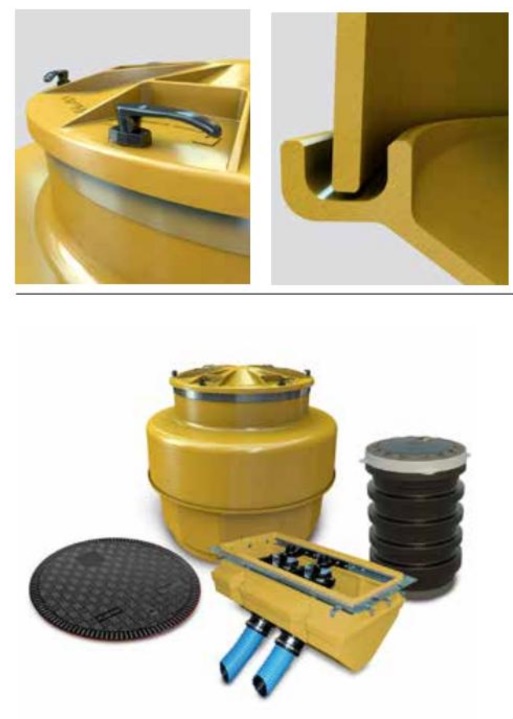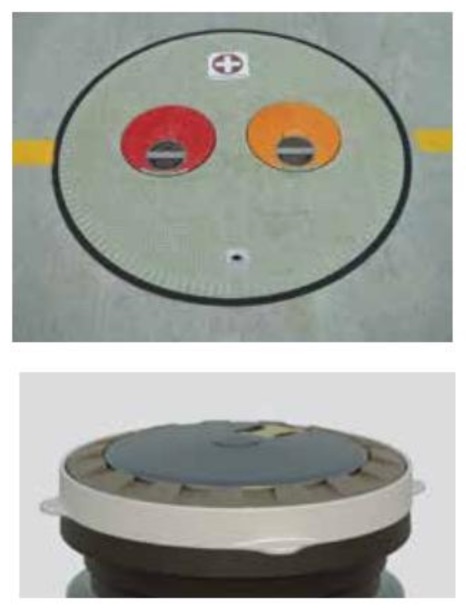Now that spring has sprung, fuel retailers must ensure that fouled fuel does not ruin their summers
By Ed Kammerer
As Canadians continue to thaw out from a winter that featured many finger-numbing and teeth-chattering extremes — a record-setting -26°C at Niagara Falls on New Year’s Day and a “bomb cyclone” storm that left behind several feet of snow are ones that stand out — the country’s fuel retailers can take solace in one by-product of all that frigid weather:

The sub-freezing temperatures turned any stray molecules of water into ice.
That was fortunate because the level of water intrusion into underground storage tanks (USTs) at retail fueling sites has become a front-of-mind concern for forecourt operators. And with temperatures warming, all of that accumulated ice will melt and the resultant water will have to go somewhere. To make sure it is not into their USTs — where it can foul motor fuels and eventually lead to expensive breakdowns in dispensing systems and vehicle operation — retailers must take the proper steps to ensure that water intrusion does not become a systematic problem.
Why Now?
Despite the fact that gasoline and diesel fuel have been used to power motor vehicles for more than a century, water intrusion has become a hot-button topic today because of significant changes in how motor fuels are manufactured, distributed and stored. In its “How Water Enters a Storage System” report, the Steel Tank Institute (STI) determined that there are three main reasons why there has been an increase in water intrusion in fuel-storage systems. Those reasons are:
- Changes in the distribution infrastructure: Higher volumes of fuel are moving faster and faster through the delivery network, from refinery to pipeline to bulk-storage rack to forecourt. This accelerated distribution system leaves less time for water to settle in the bottom of storage vessels before it moves to the next stop in the delivery process. Additionally, the growth of shared fuel-delivery operations removes much of the control that individual producers and shippers had previously had over their product and delivery processes.
- Changes in fuel chemistry: It’s a fact of fuel-retailing life that additives like ethanol and biodiesel are required to be blended with neat gasoline or diesel. Based on their structure, these new fuel formulations have characteristics that make them more susceptible to water-caused moisture accumulation, separation and biodegradation. For example, today’s lead-free fuels don’t have the one fuel component — the lead itself — that is a natural poison to the microbes that are the foundation of microbial growth.
- Installation procedures: Alterations in what are considered acceptable installation procedures — USTs with open vents, low fill areas, sloped rather than level tank installations, etc. — can create new ways that water accumulation can occur

With the identification of the reasons that the number of instances and levels of water intrusion have increased, it’s time to consider the ways that water can enter a UST. In reality, there are countless conditions that can play a role in allowing water to find its way into the UST, but some of the most common are:
- Fuel delivered with water already present
- Accumulated water in spill bucket drains or leaks into UST
- Deliver cap not replaced properly
- Hole in vent cap or line
- UST leak that allows entry of groundwater
- Cracked, degraded or ill-fitting seals on the tank-sump lid
- Loose fittings or plugs
- Condensation caused by fuel-temperature swings
Some of these causes are easier to eliminate than others, but retailers must be aware that all of them have the capability to allow water to enter and foul their fuel. Therefore, due diligence must be performed to ensure that none of these causes are allowed to occur or linger.

Drying Up Water Intrusion
Fortunately for fuel retailers, the developers and manufacturers of fuel-storage system components have been able to create pieces of equipment that offer a level of watertightness that can put a stop to unwanted water intrusion.
Five of the most noteworthy UST solutions that can be used to protect fueling sites, owners and drivers that from water intrusion:
- No-Drill Dispenser Loop Sumps: These are prefabricated sumps that eliminate improper entry-fitting installation and ensure proper pipe alignment. The shallow bury “loop” design keeps entry penetrations above the water table. Factory-installed dual-sided, rigid entry fittings provide double protection by sealing on the pipe inside and outside the sump, which prevents groundwater intrusion into the sump and keeps all of the fluid that is collected in the sump from entering the access pipe. Rigid composite material eliminates entry-fitting degradation that can result in water intrusion.
- Composite Multiports with Watertight Lids and Covers: Offer corrosion-resistant construction that is engineered in conjunction with fiberglass containment sumps and specially designed covers, which provide watertight spill containment for UST fill pipes and vapor-recovery risers.
- No-Drill Tank Sumps: Feature integrated factory-installed conduit ports and an electrical wiring junction box, which eliminates the need for any drilling that can create tank-sump leak points. Also, have consistent wall thicknesses and smooth sealing surfaces inside and out for watertight entry-fitting security.
- Composite Manhole Covers: Watertight, lightweight, non-bolted covers with sealing gasket that helps guard against water intrusion.
- Sealable Cover Spill Containers: Have an integral “plumber’s plug” sealable design that prevents water from penetrating the spill container at the surface and entering the UST, as well as spilled products from entering the soil near the fill and vapor-return riser connections on USTs during normal tank-filling operation, or in the event of a tank-overfill occurrence.
The lesson here is that fuel retailers who incorporate any of these components into their fuel-storage systems will improve the chances that their USTs will not be subject to harmful levels of water intrusion. By extension, this will result in reduced maintenance, repair and replacement costs that are associated with the storage and dispensing of water-fouled fuel.
Conclusion
The ice caused by freezing temperatures is gone in most of Canada (at least for a few months), but the moderating temperatures create new concerns for fuel retailers — namely the increased chance that water intrusion will compromise the quality of their fuel. To avoid water intrusion and the costly effects that it can have on the operation of fuel-storage systems and the vehicles that receive damaged fuel, retailers would be wise to look into upgrading to any of the many different watertight UST storage-system components that are now available to the market.
About the Author:
Ed Kammerer is the Director of Global Product Management for OPW, based in Cincinnati, OH, USA. He can be reached at ed.kammerer@opwglobal.com. OPW is leading the way in fueling solutions and innovations worldwide. OPW delivers product excellence and the most comprehensive line of fueling equipment and services to retail and commercial fueling operations around the globe. For more information on OPW, please go to OPWGlobal.com.